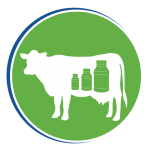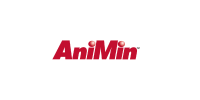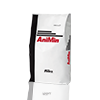
Dairy Cow Nutritional Supplement
During lactation, dairy cows have very high nutritional requirements relative to most other species. Meeting these requirements, especially for energy and protein, is challenging. Diets must have sufficient nutrient concentrations to support production and metabolic health, while also supporting rumen health and the efficiency of fermentative digestion.
Under nearly all practical management conditions, dairy cows and growing dairy heifers are fed ad lib. Thus, voluntary feed intake is the major limitation to nutrient supply in dairy cattle. Feed intake is usually characterized as dry matter intake (DMI) to compare diets of variable moisture concentrations. DMI is affected by both animal and feed factors. Body size, milk production, and stage of lactation or gestation are the major animal factors. At peak DMI, daily DMI of high-producing cows may be 5% of body wt, and even higher in extremely high-producing cows. More typical peak DMI values are in the range of 3.5%–4% of body wt. In mature cows, DMI as a percentage of body weight is lowest during the nonlactating, or dry, period. In most cows, DMI declines to its lowest rate in the last 2–3 wk of gestation. Typical DMI during this period is <2% of body wt/day, with intake rates depressed more in fat cows than in thin ones. Feed intake during this period has an important relationship to postpartum health, with low DMI and associated prepartum negative energy balance increasing the risk of postpartum disease. After calving, DMI increases as milk production increases; however, the rate of increase in feed consumption is such that energy intake lags behind energy requirements for the first several weeks of lactation. Milk production and associated energy requirements generally peak around 6–10 wk into lactation, whereas DMI usually does not peak until 12–14 wk into lactation. This lag in DMI relative to energy requirements creates a period of negative energy balance in early lactation. Cows are at greater risk of metabolic disease during this period than at other times during their lactation cycle. Management and nutritional strategies should be designed to maximize DMI through the period of late gestation and early lactation.



